Abstract
Red light causes a reduction in the extension growth of dark-grown seedlings. The involvement of gibberellin in this process was tested by screening a number of gibberellin synthesis and gibberellin response mutants of Pisum sativum L. for the kinetic response of stem growth inhibition by red light. Gibberellin deficient dwarfs, produced by mutant alleles at the Le, Na, and Ls loci, and gibberellin response mutants produced by mutant alleles at the La and Cry2, Lka, and Lkb loci were tested. Extension growth of expanding third internodes of dark-grown seedlings was recorded with high resolution using angular position transducers. Seedlings were treated with red light at a fluence rate of 4 micromoles per square meter per second either continuously or for 75 seconds, and the response was measured over 9 hours. With certain small exceptions, the response to the red light treatments was similar in all the mutants and wild types examined. The lag time for the response was approximately 1 hour and a minimum in growth rate was reached by 3 to 4 hours after the onset of the light treatment. Growth rate depression at this point was about 80%. Seedlings treated with 75 seconds red light recovered growth to a certain extent. Red/far-red treatments indicated that the response was mediated largely by phytochrome. The similar responses to red light among these wild-type and mutant genotypes suggest that the short-term (i.e. 9 hour) response to red light is not mediated by either a reduction in the level of gibberellin or a reduction in the level or affinity of a gibberellin receptor.
Full text
PDF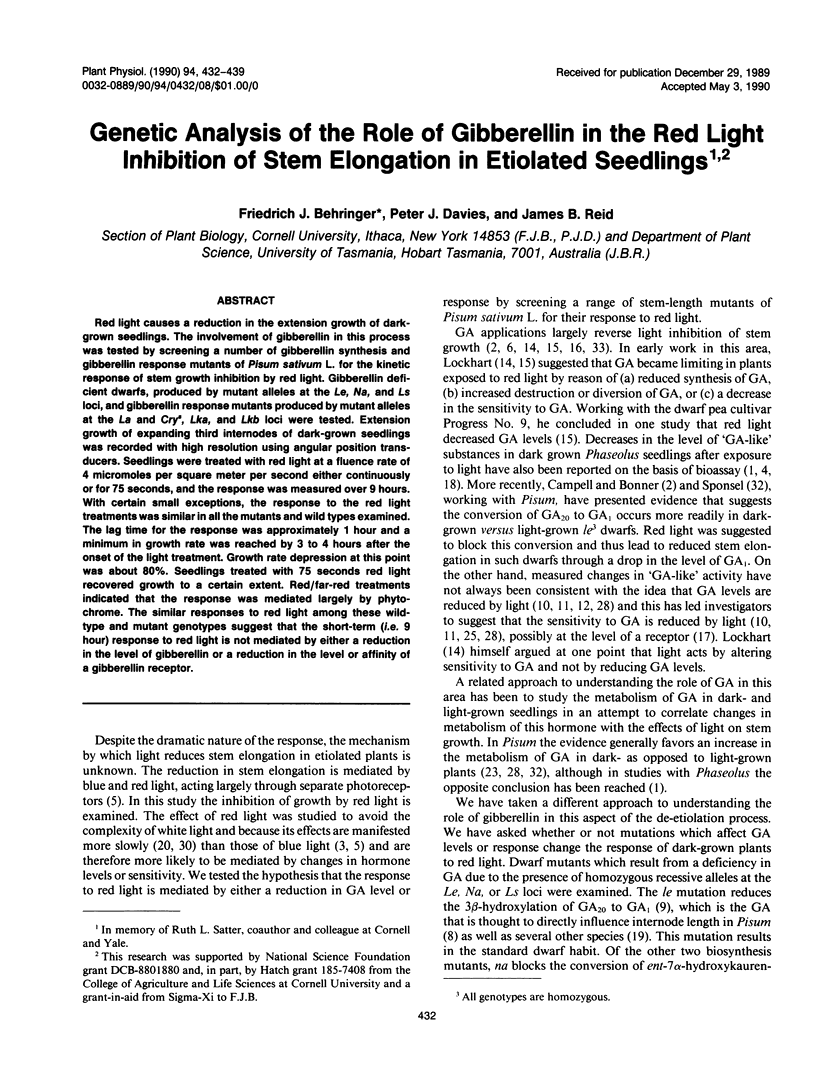
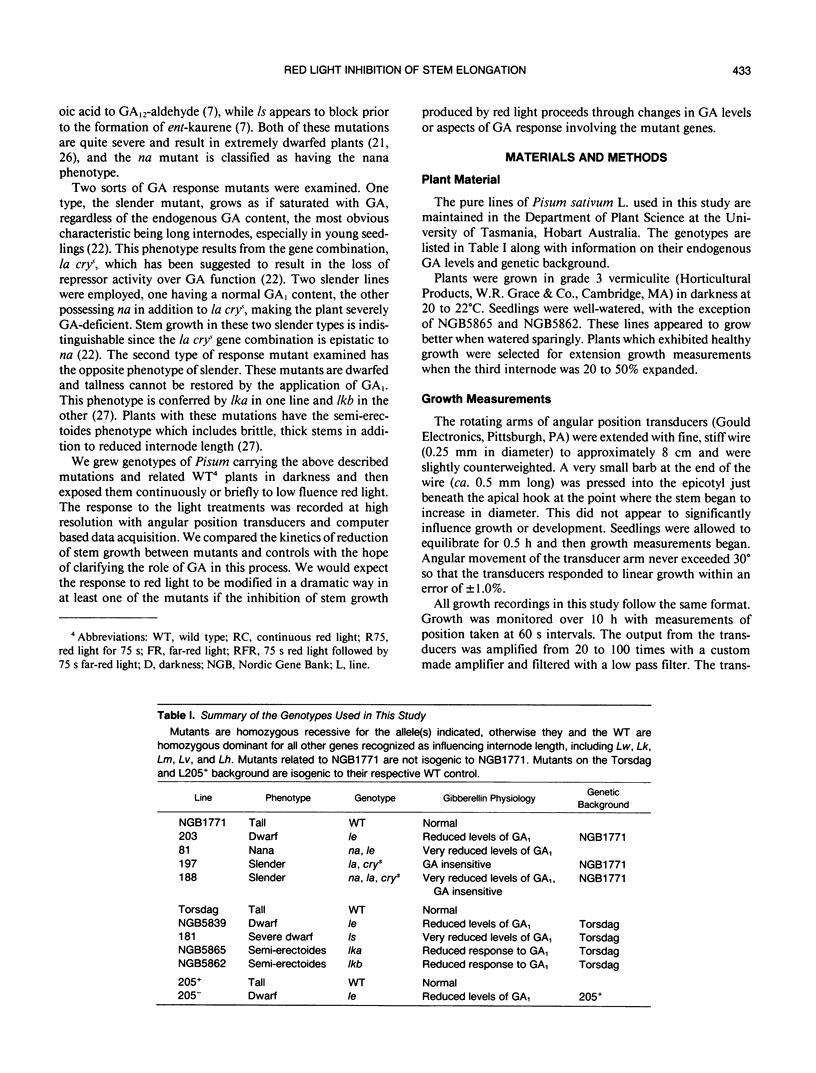
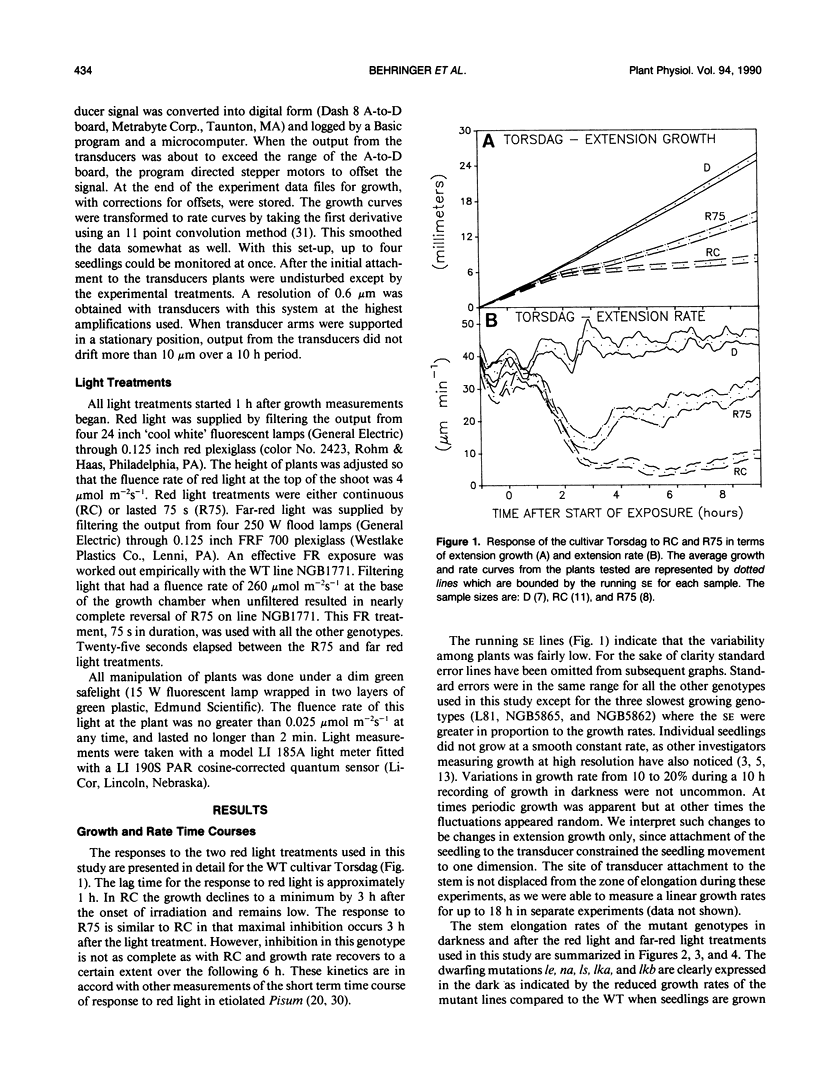
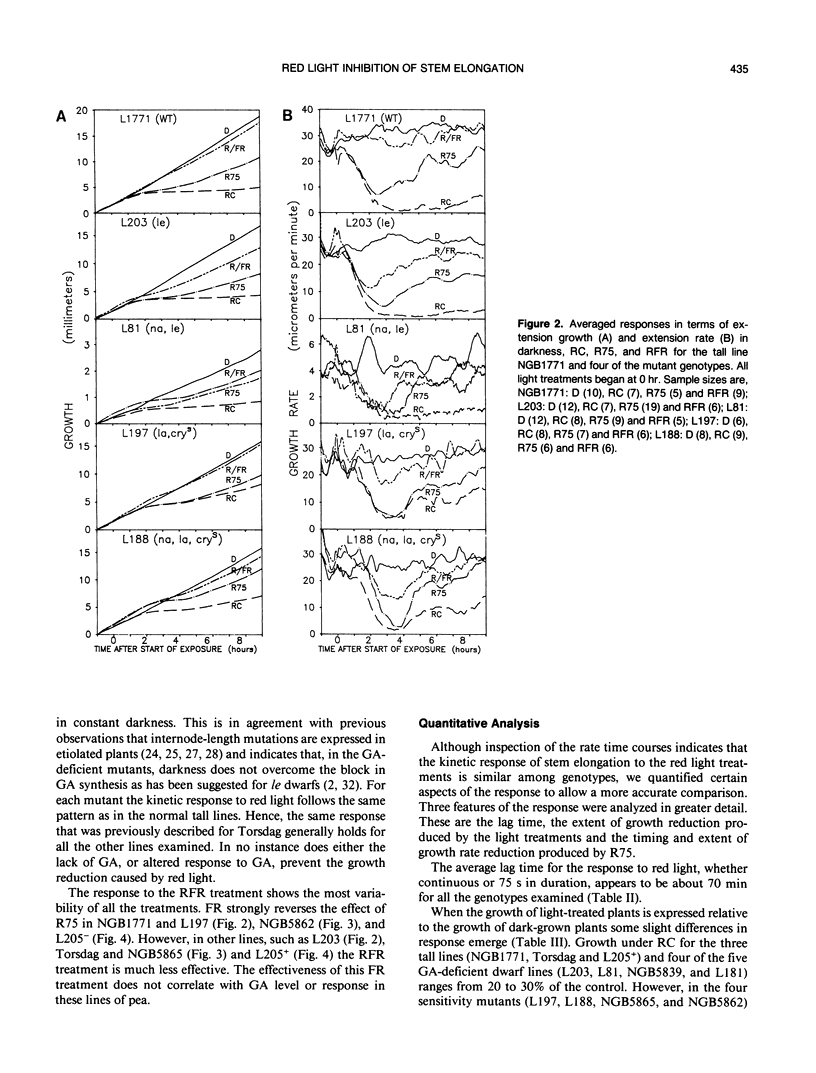
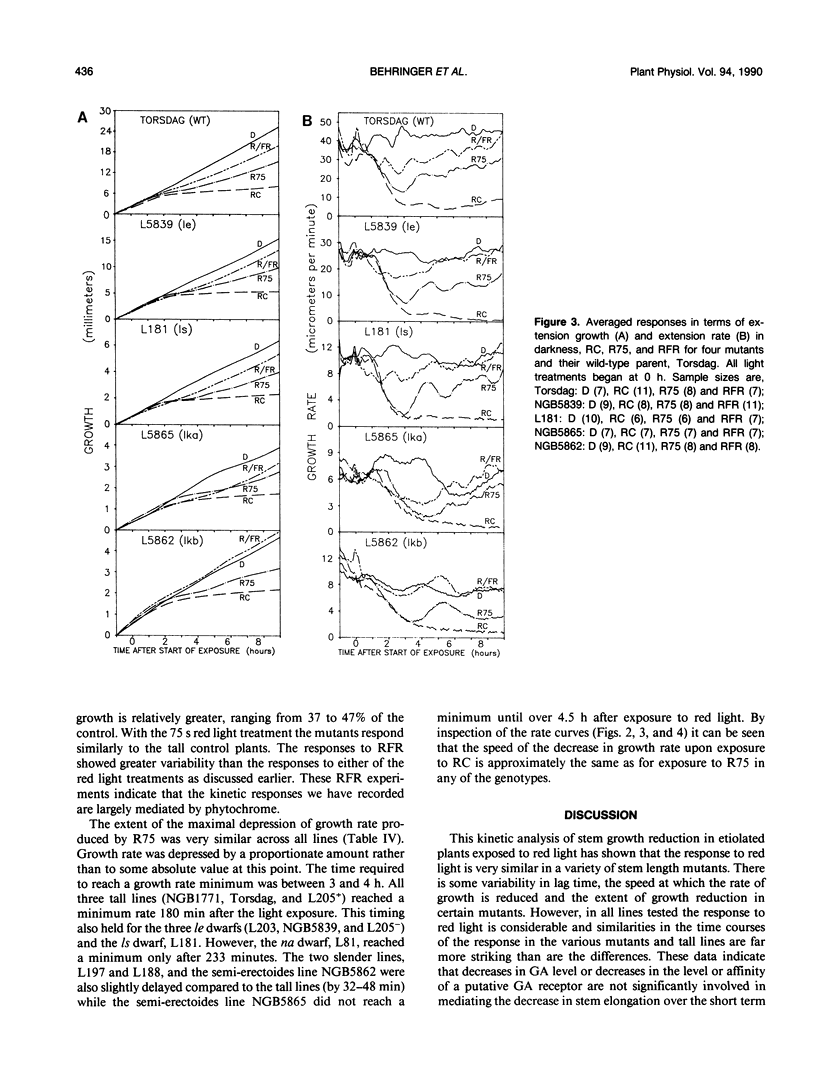
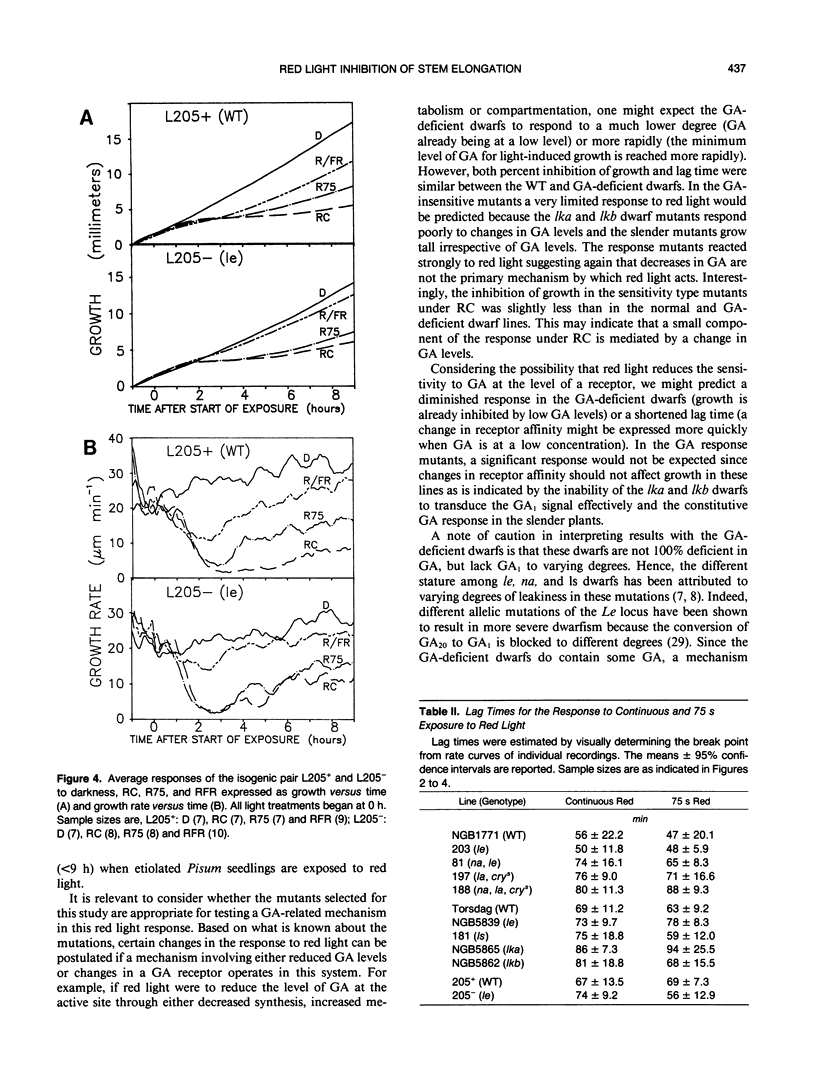
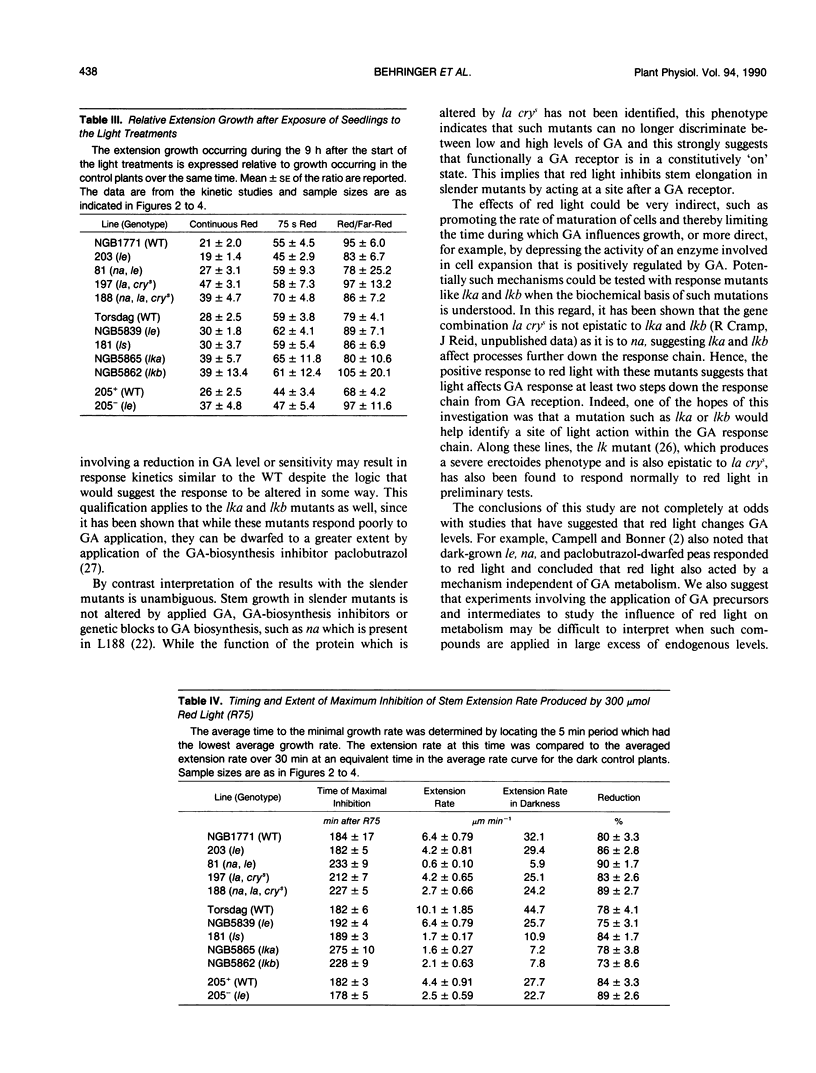
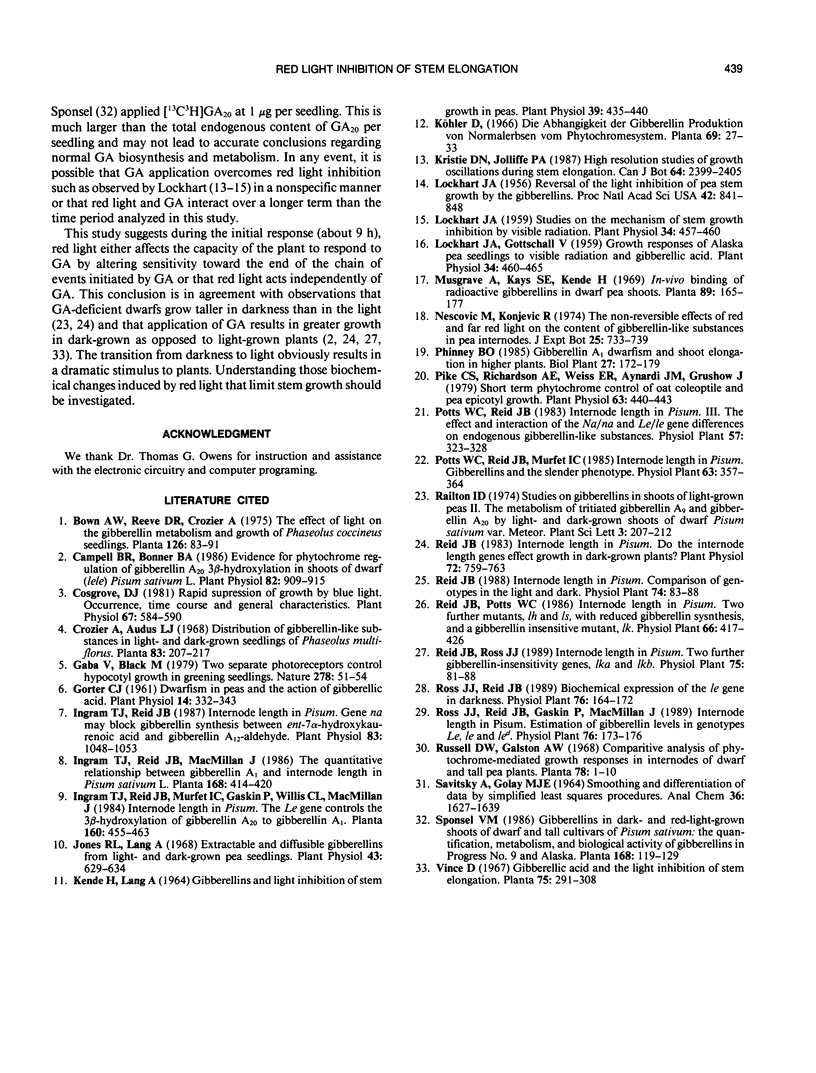
Selected References
These references are in PubMed. This may not be the complete list of references from this article.
- Campell B. R., Bonner B. A. Evidence for Phytochrome Regulation of Gibberellin A(20) 3beta-Hydroxylation in Shoots of Dwarf (lele) Pisum sativum L. Plant Physiol. 1986 Dec;82(4):909–915. doi: 10.1104/pp.82.4.909. [DOI] [PMC free article] [PubMed] [Google Scholar]
- Cosgrove D. J. Rapid Suppression of Growth by Blue Light: OCCURRENCE, TIME COURSE, AND GENERAL CHARACTERISTICS. Plant Physiol. 1981 Mar;67(3):584–590. doi: 10.1104/pp.67.3.584. [DOI] [PMC free article] [PubMed] [Google Scholar]
- Ingram T. J., Reid J. B. Internode Length in Pisum: Gene na May Block Gibberellin Synthesis between ent-7alpha-Hydroxykaurenoic Acid and Gibberellin A(12)-Aldehyde. Plant Physiol. 1987 Apr;83(4):1048–1053. doi: 10.1104/pp.83.4.1048. [DOI] [PMC free article] [PubMed] [Google Scholar]
- Jones R. L., Lang A. Extractable and Diffusible Gibberellins From Light- and Dark-grown Pea Seedlings. Plant Physiol. 1968 Apr;43(4):629–634. doi: 10.1104/pp.43.4.629. [DOI] [PMC free article] [PubMed] [Google Scholar]
- Kende H., Lang A. Gibberellins and Light Inhibition of Stem Growth in Peas. Plant Physiol. 1964 May;39(3):435–440. doi: 10.1104/pp.39.3.435. [DOI] [PMC free article] [PubMed] [Google Scholar]
- Lockhart J. A., Gottschall V. Growth Responses of Alaska Pea Seedlings to Visible Radiation and Gibberellic Acid. Plant Physiol. 1959 Jul;34(4):460–465. doi: 10.1104/pp.34.4.460. [DOI] [PMC free article] [PubMed] [Google Scholar]
- Lockhart J. A. REVERSAL OF THE LIGHT INHIBITION OF PEA STEM GROWTH BY THE GIBBERELLINS. Proc Natl Acad Sci U S A. 1956 Nov;42(11):841–848. doi: 10.1073/pnas.42.11.841. [DOI] [PMC free article] [PubMed] [Google Scholar]
- Lockhart J. A. Studies on the Mechanism of Stem Growth Inhibition by Visible Radiation. Plant Physiol. 1959 Jul;34(4):457–460. doi: 10.1104/pp.34.4.457. [DOI] [PMC free article] [PubMed] [Google Scholar]
- Pike C. S., Richardson A. E., Weiss E. R., Aynardi J. M., Grushow J. Short term phytochrome control of oat coleoptile and pea epicotyl growth. Plant Physiol. 1979 Mar;63(3):440–443. doi: 10.1104/pp.63.3.440. [DOI] [PMC free article] [PubMed] [Google Scholar]
- Reid J. B. Internode length in pisum: do the internode length genes effect growth in dark-grown plants? Plant Physiol. 1983 Jul;72(3):759–763. doi: 10.1104/pp.72.3.759. [DOI] [PMC free article] [PubMed] [Google Scholar]


